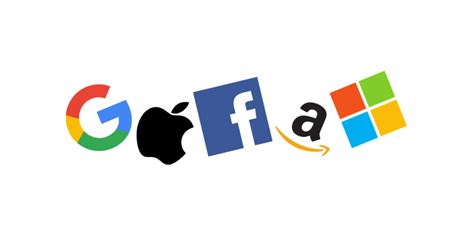In some ways, globalization isn’t a bad thing. One of my favorite experiences thus far in life has been running IRC channels/networks with a global population. On the other hand, the globalization – especially corporatization – of online social life has been a decided negative experience. Having to deal with behemoths like Google, Amazon, and Facebook just to socialize with dispersed family isn’t anything to write home about. The cognitive dissonance of massive corporations whose sole purpose is to surveil you in order to sell the products of that surveillance to advertisers also being the ones who have come to define the meaning of privacy online to an entire generation (and redefine it, for my generation backwards) is truly something to behold. I used to volunteer for an organization which sought to protect the vulnerable from cyberstalking in the earlier days of the internet. These days, the ability to stalk people has grown exponentially – and usually on the backs of platforms which have grown around the express purpose of tracking their users everywhere they go.
How did we get here? The same way we’ve arrived at most of the places we’re currently at, as Western consumers – by way of convenience. One-stop-shopping has been a plague on our habits since it was introduced, and the more it has invaded our social lives, the worse it has become. We’ve centralized everything because it is most convenient. With this centralization has come a relinquishment of control – of myriad aspects of our lives. What else we need to realize, though, is that while these corporations are indeed creepy – they aren’t the real problem. The real problem is us. We are the ones who made them behemoths. We are the ones who sacrificed quality, locality, privacy and personality on the altar of convenience. We have no one to blame but ourselves. Just like the problem came from us, the solution comes from us as well. We have to choose to act differently.
Instead of ordering from a company’s Amazon storefront – order from the company itself. Instead of looking globally for things you need – look locally. It takes more work to find, sometimes, yes – but it also provides more work to people who live near you. I just planted 4 fruit trees in my front yard. I have a paper route, where I deliver a secondhand goods paper to a variety of local businesses. While on that route, I bought the trees from a local feed store, a rake from a hardware store – and since I was delivering papers to a different hardware store at the time, picked up some gravel to fill in holes in my driveway. If you’re going for convenience, go to places that are actually convenient to you. Local places, that are on your way to wherever you are going. On the other hand, sometimes what you need is only available at big box stores – or if you order it. I broke down and went to Home Depot to get some foldable sawhorses yesterday. Where they get you is when you see that they also have red mulch on sale for 5/10$… but I digress 🙂 What I should have done was find a small business that sells foldable sawhorses – but I didn’t think of it at the time – because I’d already looked at all the hardware stores on my route, and none of them sold what I wanted. The other thing I could have done was buy the lumber and make my own sawhorses… but I’ve made a good half dozen sets over the years, and they never last – and they’re a pain to store.
In my Mancave post, I talk about how I’ve shopped local for the building supplies I needed for this project. What I haven’t done as well with is shopping specialty for my equipment. It was so much easier to just make a wishlist on Amazon, populate it, and pick up practically everything for the project from there. I’ve decided that this is the last project I’m doing that way. I’m proud that I’ve been able to support my local businesses (like Jack’s Hardware and Alexander Hardware and Supply) with the building materials, but I really could have done better with the equipment. This is getting a bit afield of the point, though. Where Home Depot is better, marginally, than Amazon, is that they rely (primarily) on having a large stock of items in a central location that you can actually look at and go to. The same thing goes for an Auto Zone, or a Harbor Freight, or other “chain” stores of that magnitude. That is supply chain thinking. Amazon has taken “supply chain thinking” and made it gargantuan – and has mostly eliminated the local option. They are supply chain in the cloud.
With places like Amazon, though, we have outsourced our privacy to gain convenience. Amazon “knows” what we want, and can “suggest” things we might also want by means of number-crunching comparisons to both our purchase history, and that of millions of other people. Facebook and Google do the same thing with our browsing history – and sell the results of that number-crunching to advertisers, to better “target” us. They’re so good at surveilling us that their platforms are also outsourced by government agencies for surveillance tasks. Not only that, they have created “sweetheart deals” with other large corporations to circumvent things like DMCA laws through AI-driven content managers like YouTube’s ContentID. ContentID scans every video uploaded to YouTube, and scans it for copyrighted content. When that content is “flagged” as something a corporation has copyrighted, YouTube forces the uploader to prove that it isn’t copyrighted – to prove a negative. The corporation on whose behalf it was “flagged” is the only court of appeal for that content. Tell me that isn’t backwards! As a church tech/sound guy, I’m in charge of our service recordings. At least two hours of my week, every week, is spent appealing obviously public domain songs that were flagged as copyrighted – because some company, somewhere, has a performance of said song copyrighted. As a result, and after spending some time talking with some others at my church, I’m working on a way to move us off of YouTube – because it has crossed the line into harassment – into cyber-stalking. Big Tech’s relentless drive to know everything about us – the price for using their “free” services – has got us almost convinced that this is normal.
This is not normal. This is not right. I’d much rather go to the expense and trouble of hosting my church’s videos myself, rather than fighting with a Google subsidiary (and her music industry sweethearts) over whether public domain music is actually in the public domain. Outsourcing privacy to Google costs too much. They don’t actually offer privacy – just a fig leaf. The prospect of ads (over which we have no control) during a church service is appalling – and that is the consequence of losing an in-house appeal to a company who has a vested interest(!) in saying that public domain music is not public domain – and there are zero legal consequences for doing so, since Google has circumvented the legal process in place for companies to enforce copyright(s) by using this system. Your privacy has been outsourced in a similar fashion to a variety of companies who have a vested interest in seeing that your private affairs don’t stay private. They have a vested interest in knowing everything about you. Not only that, but they have a vested interest in telling other companies everything they know about you – in fact, that’s their business model. Not only that – but we’ve handed these companies everything about us – because they have told us “we care about your privacy.” They do care – just not in the way we take it to mean. We trust them with our outsourced privacy – and they violate that trust each and every day.
We have nobody to blame but ourselves. Do you want your privacy back? You have to change your behavior. Stop using Amazon, Google, Facebook, and Twitter. As far as you can, use less Microsoft & Apple products. If we want the status quo to change, we have to change – because the status quo follows our behavior.

